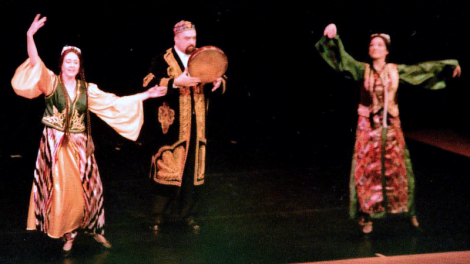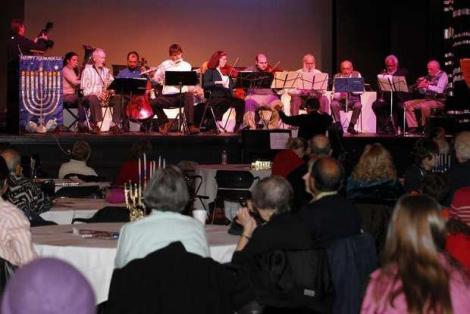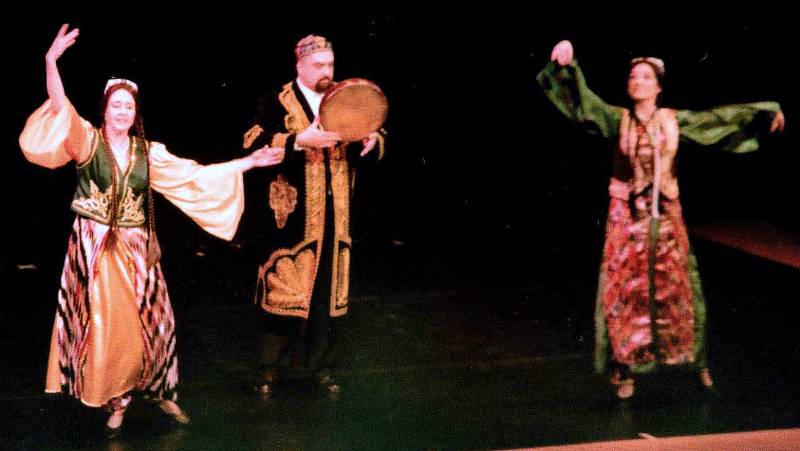
The title of this post is taken from Clayton Lord’s recent blog post, All the People, where he questions the Universalist position most arts organizations in the states take for granted. The viewpoint can be summed as he states it:
Currently, I would argue, we spend almost no time functionally thinking about diversification—we instead simultaneously assume (1) our work is universal and (2) they just don’t know it.
And this happens at ever functional and structural level in the arts. Lord continues (later in the piece) with the idea of a difference between true universalism (which I’ve increasingly come to doubt really exists) and of a “lip-service ‘white’ universalism that most arts organizations have been operating under for a long while now.” Many of these remarks are in response to Ian David Moss’s post, Why aren’t there more butts of color in these seats, which was a response to an earlier post of Lord’s.

While theatre may have different obstacles than orchestras and musical groups for creating diversity in their content and audiences there are some similar issues. Since I often blog about diversity issues in the arts–both age diversity as well as racial diversity–this issue has been the focus of much of my thought and actual practice.
As I mentioned in my comment in Lord’s previous post and in a my Diversity and the Arts: The Portland Initiative post, one question that usually gets sidestepped is whether arts organization that already cater to niche demographics should be, say, forced to diversify their audiences. I put it this way (in the second of three questions that I think should be asked about diversity initiatives):
2) Should it be done? This is the question most discussed at Patti’s and McManus’ blog. The legality of affirmative action type initiatives (which is very much the line the Portland initiative is attempting to navigate) and the effectiveness of them have a peppered history in the U.S. While I don’t necessarily want to rehash most of the points made in those blogs here, one question that no one is bringing up (and the article that Patti links to only hints at it) is, for those organizations like Portland Taiko and other arts organizations which do traditionally draw ethnic audiences and/or members, will they be required to include more whites to better represent the Portland racial demographic? It’s a question like this that shows some of the problematic issues of quotas and the asymmetry of their implementation.

Though I suspect no one is seriously considering doing this rather than creating initiatives to drive more traditionally “white” oriented arts organizations to cater to a more diverse crowd. That these traditional arts organizations are actually creating content which is consumed by a largely white audience shouldn’t be much contested. There’s plenty of data to back that up such as at Tom Loughlin’s blog, a poor player …meditations on the art of theatre…, writing a provocative post with a claim referring to The Broadway League 2010-11 Demographic Report, stateing that Theatre is primarily for white people, as both audience members and practitioners. My own post making a similar claim about classical music audiences drew a commenter to state:
This analysis is disgusting. Classical music exists only for Caucasians? You have to use some incredibly twisted logic and racist reasoning to account for the decline in popular music audiences. You should be ashamed!
And I can’t help thinking the idea that traditional European Arts are so intimately viewed as universal that I shouldn’t dare to claim otherwise and to do so must surely mean that I’m probably a racist.

I’m not even going to defend the fact that racial/ethnic groups tend to have different arts preferences. I’ve blogged enough about Waldfogel’s research into the differing tastes of different populations and how economic harm can come to preference minorities from a larger majority group when fixed costs are significant. There is also evidence that suggests (I’ll have to find this study again) that while those who get the opportunity to enjoy the arts get some positive psychological benefit, those who enjoy arts that is related to their ethnic/cultural background get an even greater psychological benefit from experiencing those arts.

I think Robert Garfias public policy piece, Cultural Diversity and the Arts in America (1989), that I blogged about in the past sums it up from the consumer/participant side of things:
The reasons are complex, but in essence for these new immigrants, the environment has initially appeared very hostile. At almost every furtive foray into the larger unknown territory, their initial perception has been further reinforced. Everything they see around them appears to reject who they are. The contrast between the comfortable support of their community and the hostility and lack of acceptance on the outside makes all but the very necessary excursion into the exterior uninviting. Our concert halls, museums and galleries which for us represent an aspect of our lives which we deeply cherish and need, reflect for these large communities of immigrants, even more pointedly, the very same hostility and unwelcomeness which they experience when they must venture out. Here, even more so, our art institutions seem to say that “you must belong here to enter” and “you must know what you are doing here”. For these new immigrants and a good number of other diverse ethnic groups in America there is little or no incentive to meet this challenge. To them our open doors appear as tightly shut as ever. The apparent hostility of our arts institutions to the non initiated is, most unfortunately, something vividly clear to those outside and at the same time something unimaginable to those working within the institutional network structure.
The push for diversifying the audience will need to get past this barrier. The other two questions I asked in my Portland Diversity blogpost were 1) Can it be done? and 3) How will it be done? I’m not as optimistic about the possibility of these as I was in the original post. While it’s good to see the issue being discussed in some fashion again–I imagine it will be a perennial problem–when it comes to what we might consider “flagship” organizations (the big ones like Orchestras, large Museums and Theatre Companies, Opera Companies) most of the change I suspect we’ll see will be in smaller organizations and the proportion of those that cater to niche ethnic populations.

Which isn’t necessarily a bad thing. Eventually one of those organizations may grow into a larger one with more funding and a slightly more diverse audience but I suspect, as in the case of the Traditional Chinese Orchestras and Arabic Orchestras I’ve been blogging about here, we’ll simply be seeing more niche-like appeal with audiences mainly from the ethnic communities with a few token “non-ethnics” who happen to be fans of the genre or style.

Sure, there are hybrid groups being formed and which will continue to form and evolve, but audiences for those will be “marginal members” of ethnic communities. Much of the reason I believe this to be the case is my own experiences and the experiences of a number of ethnic musicians (or musician fans of ethnic music) that I’ve had the pleasure of sharing bills with or performing with regularly (as the numerous photos in this post show).
Of course, since the discussion above is happening between folks in the theatre community, I am very curious to see what ideas or solutions they might come up with and I would be happy to see how a different type of arts community addresses this issue!
________________________
RELATED POSTS:



I’m sorry but this is not real music. It is folkloriko for ignorant people. The ‘Greek’ dance group looks pathetic. Nothing to do with real folk Greek music. How can I tell? The lack of interest in similating anything close to the real thing. This man here does this group in Greece does the best simulation to the original possible: https://www.youtube.com/watch?v=oZIt0-YW10w&list=UUk5o4w_BBSznMGWg721_lGg&index=5
LikeLike
And what exactly is the “original?” Sure, immigrant populations outside of their home countries don’t have the same cultural resources as native musicians and dancers in their own countries–and that is certainly going to affect the quality and nature of any art form. At the same time, issues of “authenticity” invariably boil down to who has the legitimacy in determining what’s the “true voice” of any art. Fortunatly, art forms evolve as they leave that original context–and since we have no documentation of the “original” folk dances/music we simply rely on our ideas of tradition to continue producing it.
LikeLike